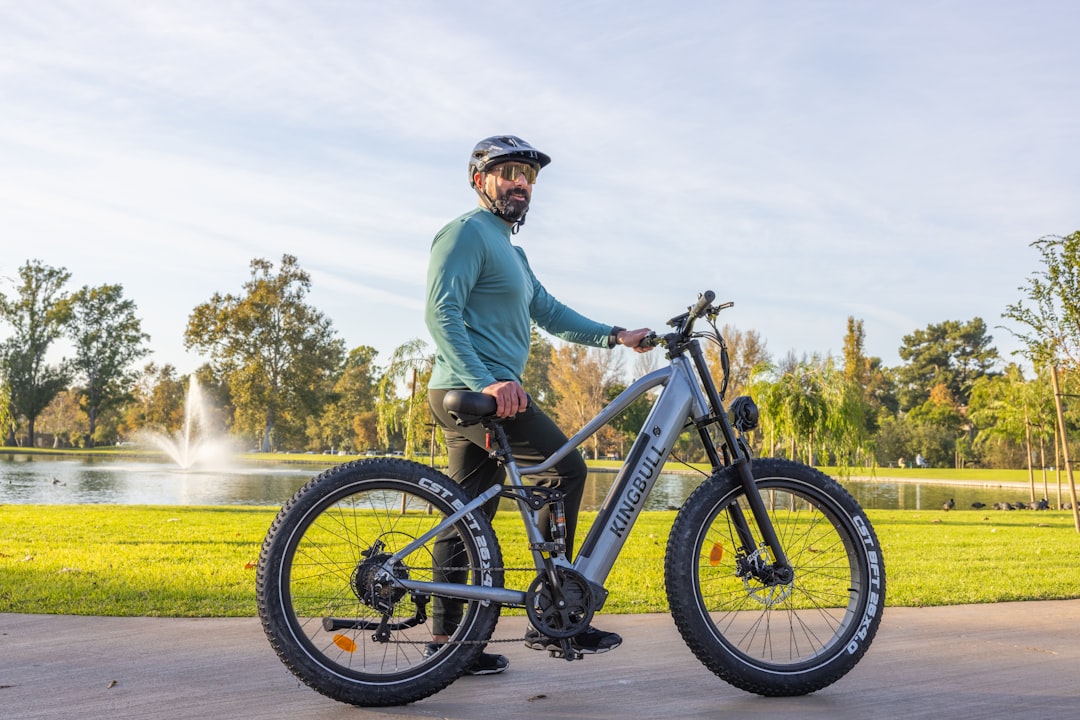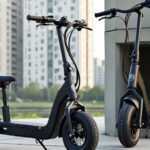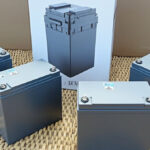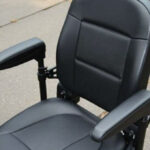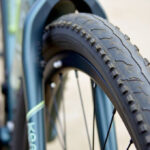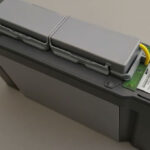Understanding Cadence vs Torque Sensors for Your eBike
When choosing an eBike, the type of sensor it uses can dramatically affect your riding experience. Two key technologies you’ll encounter are cadence vs torque sensor systems.
Quick Comparison:
- Torque Sensors: Offer a more natural biking feel, longer battery life, and better control, ideal for those looking for a workout or a more intuitive ride.
- Cadence Sensors: Easier to use, more affordable, but can consume more battery and provide a less natural ride feel.
Selecting the right sensor depends on how you ride, where you go, and what you want from your eBike. Adjusting to either can significantly improve your biking experience.

Comparing Torque & Cadence Sensors
Natural Riding Feel
Torque sensors are designed to replicate the experience of traditional biking. They measure the force you apply to the pedals and adjust the motor assistance accordingly. This creates a more intuitive and natural riding feel. When you pedal harder, the motor provides more support, making it feel like you’re getting a helpful push from behind. This seamless transition can make your ride smoother and more enjoyable.
Imagine riding up a steep hill. With a torque sensor, the harder you pedal, the more assistance you get, making the climb feel less strenuous. This feature is particularly beneficial for those who want to maintain a certain level of physical exertion while still enjoying the benefits of an eBike.
Consistent Assistance
On the other hand, cadence sensors focus on the speed of your pedaling. They detect how fast you’re turning the pedals and then activate the motor to provide a consistent level of assistance. This means you don’t have to pedal harder to get more help; the motor kicks in as soon as you start pedaling.
Cadence sensors offer a more predictable ride. The motor provides uniform power, which can be great for beginners or those who prefer a more relaxed ride. For example, if you’re riding on flat terrain and want a steady pace without much effort, a cadence sensor will keep you moving smoothly.

Differences in Cost and Battery Efficiency
- Torque sensors are generally more expensive due to their advanced technology. They’re often found in higher-end eBikes.
- Cadence sensors are more budget-friendly, making them a popular choice for entry-level eBikes.
Battery Efficiency:
- Torque sensors tend to be more battery-efficient. Since the motor assistance is proportional to your pedaling effort, they use less power overall.
- Cadence sensors can drain the battery faster because they provide continuous motor assistance, regardless of how hard you’re pedaling.
Key Takeaway:
If you’re looking for a natural riding experience and better battery efficiency, torque sensors are the way to go. However, if you prefer a more consistent and predictable ride at a lower cost, cadence sensors might be your best bet.
Next, we’ll dive deeper into understanding what a torque sensor is and its specific advantages and disadvantages.
What Is A Torque Sensor on an Ebike?
A torque sensor on an eBike measures how much force you’re applying to the pedals. It uses a strain gauge to detect this force and then adjusts the motor’s power to match your effort. This means the harder you pedal, the more assistance you get from the motor. This smart technology makes your ride feel more natural and intuitive.
Advantages of a Torque Sensor
Natural Riding Experience:
Torque sensors provide a riding experience that closely mimics traditional biking. The motor assistance adjusts based on how hard you pedal, making it feel like you’re just getting an extra push from behind. This can make your ride smoother and more enjoyable, especially on varied terrains.
Improved Efficiency:
Because the motor’s assistance is proportional to your pedaling effort, torque sensors are generally more efficient with battery usage. This means you can ride longer without needing to recharge, which is great for longer trips.
Better Control:
Riders have more control over the bike’s acceleration and speed. This is particularly useful when navigating different terrains or riding conditions. You can easily adjust your effort to get the right amount of assistance.
Improved Fitness Benefits:
Since the motor assistance is linked to your pedaling effort, you can get a better workout. This makes torque sensor-equipped eBikes a good option for those looking to improve their fitness while still enjoying the benefits of motor assistance.
Seamless Transition:
Torque sensors offer a smoother transition in motor assistance. This reduces the jerkiness that can be experienced with sudden starts and stops, making your ride more comfortable.
Disadvantages of a Torque Sensor
Higher Cost:
eBikes with torque sensors are often more expensive due to the advanced technology involved. This might be a barrier for those on a tight budget.
Requires More Effort:
For those seeking a more leisurely ride, the need to pedal harder to activate more assistance might be a downside. This can make torque sensor eBikes less appealing for casual riders who prefer effortless cruising.
Complexity in Maintenance:
The sophisticated technology of torque sensors might require more complex maintenance and repairs. This can be inconvenient and potentially costly over time.
Limited Availability in Budget Models:
Torque sensors are less common in lower-priced eBike models. If you’re looking for an affordable option, you might have to settle for a cadence sensor instead.
Not Ideal for Casual Riders:
Riders who prefer effortless cruising without much pedaling effort might find torque sensor bikes less appealing. The need to exert more effort to get motor assistance can be a deal-breaker for some.
Next, let’s explore what a cadence sensor is and its specific advantages and disadvantages.
What Is A Cadence Sensor on an Ebike?
A cadence sensor on an eBike measures how fast you’re pedaling. It uses a series of magnets on a circular disc to detect the rate of pedal rotation. When these magnets pass by the sensor, the motor is activated to provide assistance based on the speed of your pedaling. This mechanism ensures that as long as you’re pedaling, the motor will keep helping you, regardless of how hard you’re pushing.
Advantages of a Cadence Sensor
Ease of Use:
Cadence sensors are straightforward. You don’t need to pedal hard to get assistance. Just keep a steady rhythm, and the motor will do its job.
Consistent Power:
With a cadence sensor, you get uniform motor assistance. This can be ideal if you prefer a predictable and steady ride without fluctuations in power.
Affordability:
Generally, eBikes with cadence sensors are more budget-friendly. This makes them a good option if you’re looking to save money.
Simple Mechanism:
The technology behind cadence sensors is simpler compared to torque sensors. This simplicity can translate to easier maintenance and fewer potential issues.
Effortless Cruising:
If you want to enjoy a relaxed ride without exerting much effort, a cadence sensor is a good choice. The motor provides assistance even if your pedaling input is minimal, making it easier to cruise along.
Disadvantages of a Cadence Sensor
Battery Consumption:
Cadence sensors can be more battery-intensive. Since the motor provides consistent power regardless of your pedaling effort, it can drain the battery faster.
Less Natural Feel:
The assistance from a cadence sensor can feel less intuitive. The motor kicks in based on pedal speed, which can sometimes result in a less smooth riding experience.
Limited Control:
You have less control over the bike’s acceleration and speed compared to torque sensors. This can be a drawback if you need precise handling, especially on varied terrains.
Delayed Response:
There can be a slight lag between when you start pedaling and when the motor kicks in. This delay can be noticeable, especially for beginners.
Not Ideal for Fitness:
If you’re looking to get a workout, a cadence sensor might not be the best choice. The motor does much of the work for you, which can result in less physical exertion.
Next, let’s dive into how these sensors impact battery life and efficiency, and what that means for your riding experience.
How Sensors Impact Battery Life & Efficiency
When choosing between a cadence vs torque sensor, understanding how each impacts battery life and efficiency is crucial. Let’s break it down.
Battery-Friendly
Torque Sensors:
Torque sensors are generally more battery-friendly. They adjust the motor’s assistance based on how hard you’re pedaling. This means the motor only uses as much power as needed, conserving battery life. If you want to ride longer without charging, a torque sensor might be the better choice.
Cadence Sensors:
Cadence sensors, on the other hand, provide constant power. As long as you’re pedaling, the motor gives consistent assistance. This can drain the battery faster because the motor doesn’t adjust to your pedaling effort. You might find yourself needing to charge more often.
Power Adjustment
Torque Sensors:
With torque sensors, the motor’s power adjusts proportionally to your pedaling effort. Pedal harder, and you get more assistance. Pedal lightly, and the motor eases off. This dynamic adjustment helps in managing battery usage efficiently.
Cadence Sensors:
Cadence sensors offer uniform power based on your pedaling speed. This can be great for a predictable ride but may not be as efficient. The motor doesn’t differentiate between hard or light pedaling, leading to more power consumption.
Riding Style
Torque Sensors:
If you prefer a more natural riding feel, torque sensors are ideal. They make the ride feel like a traditional bike, just with an extra boost. This can also mean you get more exercise, as the motor assistance is tied to your effort.
Cadence Sensors:
Cadence sensors are better for effortless cruising. You don’t need to pedal hard to get motor assistance. This makes them perfect for relaxed rides or if you have physical limitations.
Practical Implications
- Long Rides: If you plan on taking long rides, a torque sensor will help you go further on a single charge.
- City Commutes: For short, frequent trips, a cadence sensor can be convenient as it provides immediate power without much effort.
- Hilly Terrains: A torque sensor will give you better control and efficiency on hills, adjusting power as you climb.
- Flat Terrains: On flat terrains, a cadence sensor can offer a smooth and steady ride without much pedaling effort.
By understanding these differences, you can choose the sensor that best fits your riding style and needs.
Next, let’s explore how to make the right choice for your ebike.
Making the Right Choice for Your Ebike
Choosing the right sensor for your ebike boils down to a few key factors: personal preference, riding style, and budget. Let’s break it down so you can make an informed decision.
Personal Preference
Your personal preference plays a huge role. Some riders love the natural, intuitive feel of torque sensors. They make the ride feel like a traditional bike, just with an extra boost when you need it. Others prefer the consistent, predictable assistance of cadence sensors, which can make riding feel effortless.
Riding Style
Fitness Enthusiasts:
If you’re riding for fitness, a torque sensor might be your best bet. It provides assistance based on your pedaling effort, which means you’ll get more exercise. As one experienced rider mentioned, “Torque sensors make it feel like you’re riding a non-powered bike with a push of wind from behind.”
Casual Riders:
If you’re more into casual, relaxed rides, a cadence sensor could be ideal. You don’t need to pedal hard to get motor assistance, making it perfect for leisurely rides. One rider noted, “Cadence sensors are great for effortless cruising, especially if you have physical limitations.”
Budget
Torque Sensors:
These are generally more expensive, often adding a few hundred dollars to the cost of the bike. However, the added cost comes with benefits like better battery efficiency and a more natural riding experience.
Cadence Sensors:
If you’re on a budget, cadence sensors are typically more affordable. They offer a straightforward riding experience and can save you some serious cash. As one rider put it, “When I’m looking for a budget e-bike, I know I can make do with a cadence sensor.”
Try Both
Some ebikes allow you to switch between sensors. If you have the option, try both types to see which one you prefer. Many riders have found that testing both sensors helped them make a more informed decision.
Test Ride Tips:
- Torque Sensor: Pay attention to how the bike responds to your pedaling effort. Does it feel natural and intuitive?
- Cadence Sensor: Notice the consistent power delivery. Does it make your ride feel smooth and effortless?
Practical Considerations
- Long Rides: Torque sensors are more battery-friendly, making them ideal for long rides.
- City Commutes: Cadence sensors provide immediate power, which is great for short, frequent trips.
- Hilly Terrains: Torque sensors offer better control and efficiency on hills.
- Flat Terrains: Cadence sensors provide a smooth, steady ride on flat terrains.
By considering your personal preferences, riding style, and budget, you can choose the sensor that best fits your needs. Happy riding!
Next, let’s dive into some frequently asked questions about cadence vs torque sensors.
Frequently Asked Questions about Cadence vs Torque Sensors
Which is better, cadence or torque sensor?
The answer depends on what you need from your ebike. If you want a more natural riding feel and better battery efficiency, a torque sensor might be better. Torque sensors adjust motor assistance based on how hard you pedal, giving you a workout while extending your battery life.
On the other hand, if you want consistent power with less effort, a cadence sensor could be your best bet. Cadence sensors provide uniform assistance based on how fast you pedal, making it easier for casual rides or if you have physical limitations.
Key Points:
- Torque Sensor: Better for battery life, natural feel, fitness.
- Cadence Sensor: Consistent power, less effort, budget-friendly.
What is the difference between a speed sensor and a torque sensor?
A torque sensor measures how much force you apply to the pedals. It offers a more responsive and natural riding experience by adjusting motor power based on your effort.
A speed sensor measures how fast your bike is moving. It’s less about your pedaling effort and more about maintaining a set speed. Speed sensors are often used in conjunction with other sensors to provide a complete riding experience.
Key Differences:
- Torque Sensor: Measures pedaling force, more responsive.
- Speed Sensor: Measures bike speed, maintains set speed.
Which is better, speed or cadence sensor?
A cadence sensor is built-in and measures how fast you’re pedaling. It’s useful for providing consistent power and is generally more budget-friendly.
A speed sensor is useful for maintaining a constant speed, especially in offroading or areas with poor GPS signal. It can complement a cadence sensor by ensuring you don’t exceed speed limits or lose power in tricky terrains.
Key Points:
- Cadence Sensor: Built-in, consistent power, budget-friendly.
- Speed Sensor: Useful for speed maintenance, offroading, poor GPS areas.
By understanding the differences and benefits of each sensor type, you can make a more informed decision for your ebike needs.
Conclusion
Choosing between a cadence sensor and a torque sensor for your ebike is all about your personal riding habits and budget.
At Doot Scoot, we aim to help you make an informed decision. If you want a natural riding experience that mimics traditional biking and offers better battery efficiency, a torque sensor might be the right choice. It’s ideal for those who want to get a workout and enjoy a seamless transition between different power modes.
On the other hand, if you prefer consistent assistance without much effort, a cadence sensor could be more suitable. It’s perfect for casual riders or those with physical limitations, providing uniform power based on your pedaling speed.
Key Takeaways:
- Torque Sensor: Offers a natural ride, better battery life, and fitness benefits.
- Cadence Sensor: Provides consistent power, is easier to use, and is more budget-friendly.
No matter which sensor you choose, the goal is to make your ebike journey enjoyable and efficient. We recommend trying both types if possible, so you can see which one aligns best with your riding style and needs.
The best ebike is the one that makes each ride enjoyable and suits your lifestyle. Happy cycling!
For more information and expert guides on ebikes, visit Doot Scoot.
